Lady Palm
- January 17, 2024
- 0 comment
The Lady Palm, or Rhapis excelsa, is renowned in indoor gardening for its elegant, fan-shaped leaves and adaptability. Originating from the shaded forests of China and Taiwan, it has gained global popularity due to its ability to thrive in various indoor light conditions and its air-purifying qualities. Ideal for both homes and offices, the Lady Palm is prized for its versatility and ease of care, making it a favored choice among plant enthusiasts.
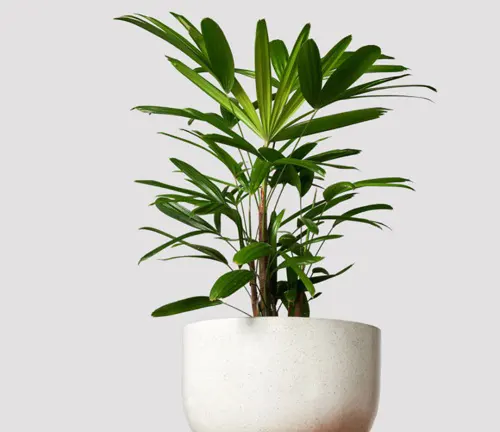
| Characteristics | Description |
|---|---|
| Scientific Name | Rhapis excelsa |
| Common Names | Lady Palm, Bamboo Palm, Broadleaf Lady Palm |
| Origin | Southern China and Taiwan |
| Type | Evergreen, fan palm |
| Growth Habit | Clumping, slow-growing |
| Mature Height | 3-4 meters (10-13 feet) indoors, can reach 10 meters (33 feet) outdoors |
| Leaves | Deep green, fan-shaped, pleated fronds, multiple stems |
| Light | Bright, indirect light |
| Water | Moderate, water when top inch of soil is dry |
| Soil | Well-draining potting mix for palms |
| Humidity | Prefers 50% or higher, benefits from misting |
| Temperature | Ideal range: 60-80°F (15-27°C), avoid temperatures below 55°F (13°C) |
| Fertilizer | Monthly during spring and summer with diluted liquid houseplant fertilizer |
| Toxicity | Non-toxic to pets and humans |
| Special Features | Air-purifying, low-maintenance, elegant appearance |
| Good For | Beginners, office spaces, living rooms, bathrooms |
Description and Characteristics
The Lady Palm, or Rhapis excelsa, is distinguished by its lush, fan-shaped leaves, each divided into 5 to 10 glossy, dark green segments with rib-like textures and serrated edges. These leaves contribute to the plant’s vibrant and textured appearance. The stems of the Lady Palm are unique as well, resembling bamboo with their slender, upright form and a coarse, fibrous texture. This rustic appearance is complemented by the stems’ color variation from green to brown as they age.
In its natural habitat, the Lady Palm can reach heights of 6 to 12 feet, but when grown indoors, it usually maintains a more manageable size of 3 to 7 feet. This moderate growth, combined with its upright and spreading habit, makes it ideal for indoor spaces where it can fill a corner or serve as an attractive focal point without overwhelming the area. The plant’s dense, radial leaf arrangement and its slow-growing, compact root system further enhance its suitability for pot culture, making it a versatile and elegant choice for interior decoration.
Growing Conditions and Care for Lady Palm
Light Requirements
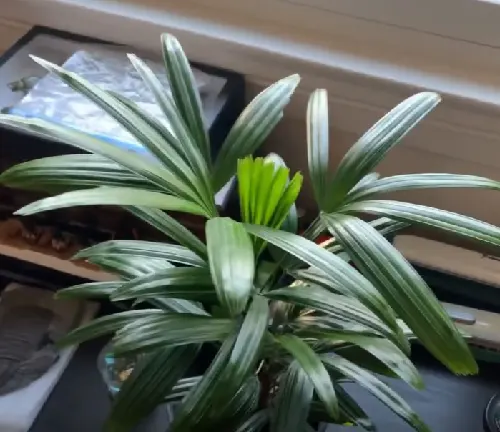
The Lady Palm is adaptable to a range of light conditions, flourishing best in moderate to low light. It can tolerate some degree of shade but prefers bright, indirect sunlight. Direct sunlight should be avoided as it can scorch the leaves. This adaptability makes it suitable for various indoor locations, from well-lit office corners to less illuminated areas of a home.
Temperature and Humidity
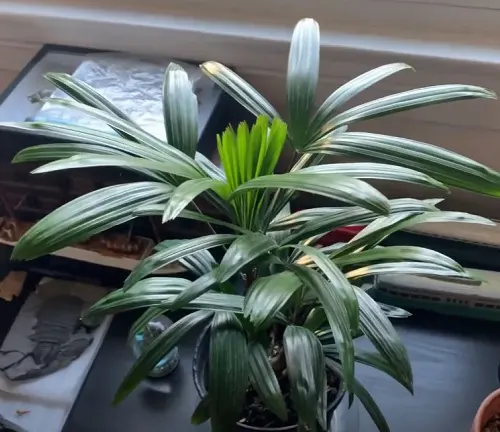
Ideal temperatures for the Lady Palm range from 60 to 80°F (15 to 27°C). It’s important to protect the plant from extreme temperatures; avoid placing it near cold drafts or excessively hot radiators. As for humidity, the Lady Palm prefers a moderately humid environment. In dry indoor conditions, occasional misting can help maintain adequate humidity levels, but excessive humidity should be avoided to prevent leaf tip burn.
Watering the Lady Palm correctly is crucial for its health. The soil should be allowed to dry out slightly between waterings. Overwatering, which can lead to root rot, is a common mistake. It’s best to water the plant when the top inch of the soil feels dry to the touch. Ensuring the pot has good drainage is essential. Use a pot with drainage holes and a saucer to catch excess water.
Soil Preferences

The right soil mix is vital for the Lady Palm. Use a well-draining potting mix, typically one that’s suitable for palms or succulents. The soil should be loamy and slightly acidic to neutral in pH. The addition of perlite or sand can improve drainage, ensuring the roots are not sitting in water.
Benefits of Having a Lady Palm
- Air-Purifying Qualities: The Lady Palm is renowned for its ability to purify indoor air. It effectively filters out common airborne toxins such as formaldehyde, xylene, and ammonia, contributing to a healthier living environment. This makes it especially beneficial in spaces with limited ventilation.
- Aesthetic and Psychological Benefits: Besides its health benefits, the Lady Palm adds significant aesthetic value. Its lush, green foliage and elegant form enhance the beauty of any space, be it a home or office. This natural beauty contributes to a more calming and refreshing environment, which can reduce stress and improve mental well-being.
Common Issues and Solutions
1. Brown Leaf Tips
- Causes: Brown leaf tips in Lady Palms can occur due to several reasons including over-fertilization, low humidity levels, and fluoride or chlorine in tap water.
- Prevention and Solutions:
- Water Quality: Use filtered or distilled water to avoid the build-up of fluoride and chlorine, which can cause leaf tip burn.
- Humidity: Maintain a moderate humidity level around the plant. This can be achieved by placing a humidifier nearby, or placing the pot over a tray of pebbles partially filled with water. Misting the leaves can also help in drier environments.
- Fertilization: Over-fertilization can lead to salt accumulation in the soil, causing leaf burn. Use a balanced, slow-release fertilizer and apply it sparingly, following the recommended dosage. Fertilize only during the growing season (spring and summer).
2. Pests and Diseases
- Common Pests: The most frequent pests affecting Lady Palms are spider mites and scale insects.
- Spider Mites: These tiny pests can be identified by the fine webbing they leave on the underside of leaves. They thrive in dry conditions and can cause yellowing or speckled leaves.
- Scale Insects: These appear as small, brown, bumpy spots on leaves and stems. They suck sap from the plant, weakening it over time.
- Prevention and Solutions:
- Regular Inspection: Frequently check the leaves, especially the undersides, for signs of pests.
- Treatment: If infestation occurs, treat the plant with insecticidal soap or neem oil. These treatments are effective yet gentle on the plant. For heavier infestations, you may need to repeat the treatment several times.
- Environmental Control: Maintaining proper humidity and avoiding dry, dusty conditions can help prevent spider mites.
- Diseases: Overwatering is a primary cause of root rot and fungal diseases in Lady Palms.
- Preventive Measures: Ensure the pot has adequate drainage and the soil does not remain waterlogged. Water the plant only when the top inch of soil feels dry to the touch.
- Detection and Treatment: If the plant shows signs of root rot (such as a foul smell from the soil, mushy base, or yellowing leaves), you may need to remove it from the pot, trim away the rotten roots, and repot it in fresh soil.
Propagation and Repotting of Lady Palms
Propagation Through Division
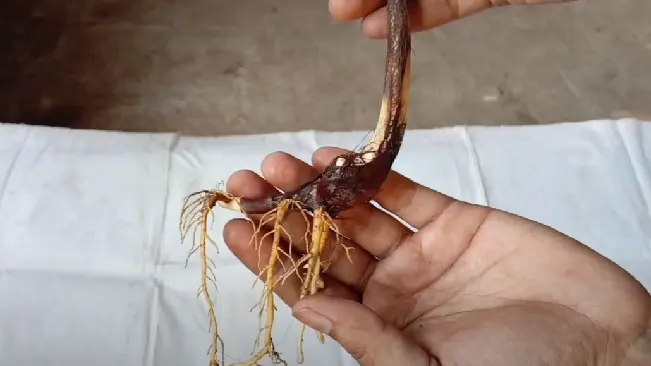
- When to Propagate: The best time to propagate Lady Palms is during repotting, typically in the spring or early summer. This coincides with their active growth period, allowing the new plants to establish more effectively.
- Process:
- Preparation: Start by gently removing the plant from its pot and brushing off excess soil to expose the root clumps.
- Separation: Identify natural divisions in the root ball where the plant has formed distinct clumps. Using your hands or a clean, sharp knife, carefully separate these clumps. Ensure each new section has a substantial portion of roots and several stems.
- Potting New Plants: Plant each division in its own pot, using a well-draining soil mix similar to what the parent plant thrived in. The pot size should be proportional to the size of the root ball, allowing some room for growth but not so large that the soil remains wet for long periods.
- Aftercare: Water the new plants thoroughly after potting. Place them in a location with similar light conditions as the parent plant and maintain consistent watering, allowing the top inch of soil to dry between waterings.
Repotting Lady Palms

- Frequency: Due to their slow-growing nature, Lady Palms typically require repotting every 2 to 4 years. This is essential to provide them with fresh soil and additional space to grow.
- Choosing the Right Pot: Select a pot that is one size larger than the current one. Ensure the new pot has sufficient drainage holes to prevent water accumulation.
- Soil Mix: Use a high-quality, well-draining soil mix. A blend designed for palms or similar indoor plants usually works well.
- Repotting Steps:
- Preparation: Water the plant a day before repotting to make the process smoother.
- Transplanting: Carefully remove the plant from its old pot and inspect the roots, trimming away any dead or excessively long roots.
- Potting: Place a layer of fresh soil in the new pot and position the plant so that it sits at the same depth it was previously. Fill around the roots with more soil, gently firming it to eliminate air pockets.
- Aftercare: Water the plant well after repotting and keep it in a shaded area for a few days to recover. Avoid fertilizing immediately after repotting to prevent root burn.
Conclusion
The Lady Palm is a remarkable plant that combines air-purifying abilities with aesthetic appeal, making it a valuable addition to any indoor space. While it does face common issues like brown leaf tips and pests, these can be easily managed with proper care. Its ease of propagation and low maintenance requirements further enhance its appeal. Whether for health benefits, psychological well-being, or simply to add a touch of elegance, the Lady Palm is an excellent choice for indoor gardeners.
FAQs
- Why are lady palms so expensive?
Lady Palms are often more expensive than other houseplants because they are slow-growing and require a lot of care and time to cultivate. - Do lady palms like sun or shade?
Lady Palms prefer bright, indirect light but can tolerate low-light conditions. They do not do well in direct sunlight, which can scorch their leaves. - Is Lady Palm a good indoor plant?
Yes, Lady Palms are popular indoor plants because they are adaptable to a wide range of conditions and are relatively easy to care for. - Does Lady Palm spread?
Yes, Lady Palms can spread by producing new shoots at the base of the plant. - Is Lady Palm fast growing?
No, Lady Palms are slow-growing plants. - Can a Lady Palm be in full sun?
No, Lady Palms prefer indirect light and can get scorched if exposed to direct sunlight. - What are the benefits of the Lady Palm?
Lady Palms are known for their air-purifying qualities. They can help to improve indoor air quality by removing certain pollutants. - Is a Lady Palm cold hardy?
Lady Palms are not particularly cold-hardy. They prefer warmer temperatures and do not tolerate frost well. - Is Lady Palm good for bedroom?
Yes, Lady Palms can be a good choice for bedrooms because they can improve air quality and add a touch of greenery. - Is Lady Palm same as bamboo palm?
No, Lady Palm and Bamboo Palm are different types of plants, although both are popular as indoor plants.


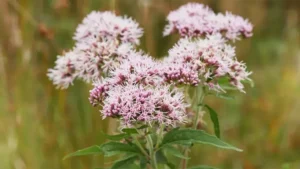






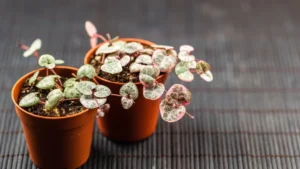
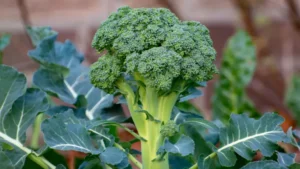
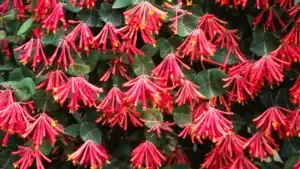

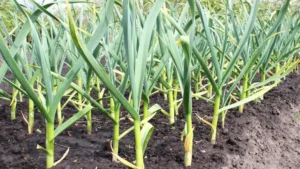
Leave your comment